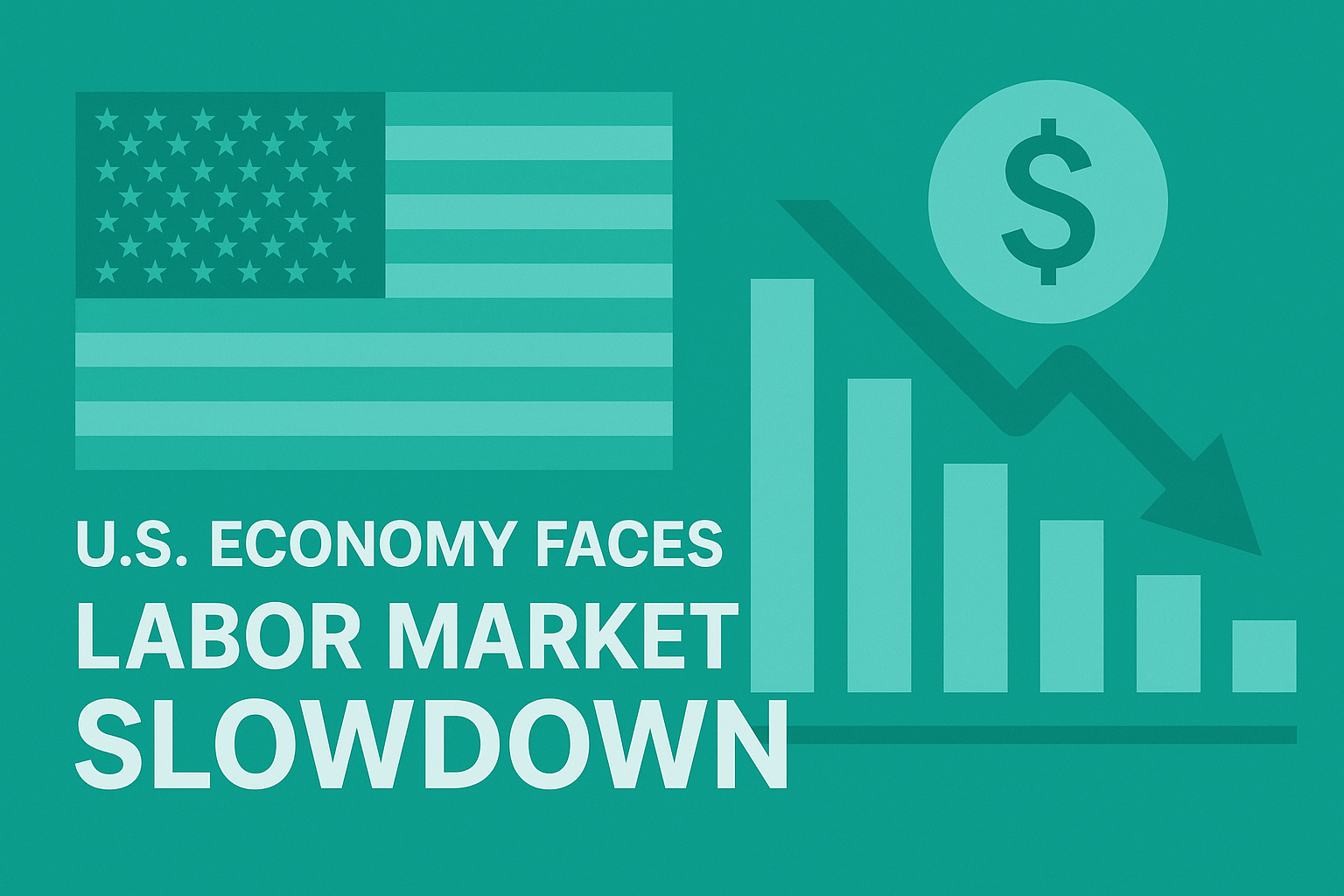— Soft Landing or Structural Slowdown? —
■ Executive Summary
The July 2025 U.S. employment report revealed a marked deceleration across all key labor market indicators — job creation, unemployment rate, and downward revisions of past data. These signals have shifted market expectations decisively toward monetary easing, as the Federal Reserve is now caught between fading inflationary pressures and mounting signs of labor market slack.
This report evaluates the current state of the U.S. economy through data-driven analysis, assesses the Fed’s policy stance, and presents macroeconomic scenarios with key risk factors shaping the path ahead.
■ Section 1: Labor Market Reality
● Sharp Slowdown in Job Creation
In July, the U.S. added only 73,000 nonfarm jobs, pushing the 3-month average below 40,000 — the slowest pace since the post-pandemic recovery began.
- Cumulative downward revisions: -258,000 (May & June)
- Job gains concentrated in public sector and healthcare
- Stagnation or contraction in retail, services, and manufacturing
● Unemployment Rate on the Rise
The unemployment rate climbed to 4.2% from 4.1%, while labor force participation held flat. This suggests underlying demand weakness, not a simple labor supply adjustment.
■ Section 2: Fed Policy and Monetary Outlook
● Dissent Within the Fed: Calls for Immediate Rate Cuts
While the July FOMC decision held rates steady, Governors Michelle Bowman and Christopher Waller dissented in favor of immediate cuts — an unusual move that highlights growing internal concern over labor market softness.
● Inflation Easing, Room for Accommodation
Core PCE inflation remains around 2.8%, modestly above the Fed’s 2% target. However, wage growth has moderated, and supply chain costs have stabilized. These conditions argue for a policy pivot from “resistance” to “insurance”.
■ Section 3: External and Policy Risks
| Risk Factor | Details |
|---|---|
| Trump-era Tariffs | Phased in from August, adding cost pressure and lowering firm margins. |
| Immigration Restrictions | Structural labor shortages, particularly in services. |
| Geopolitical Uncertainty | Taiwan, Middle East crises could trigger supply shocks and volatility. |
Each of these risks acts as an exogenous shock, potentially limiting policy flexibility.
■ Section 4: Macroeconomic Scenarios
| Scenario | Description | Q4 2025 GDP Growth | Early 2026 Unemployment | Policy Rate Path | Outlook |
|---|---|---|---|---|---|
| A) Soft Landing | Moderate slowdown + easing | +1.2% | ~4.4% | Gradual rate cuts from Dec | 👍 Strong |
| B) Stagnation | Policy lag, hiring freeze | +0.6% | ~4.7% | Delayed easing | ⚠️ Caution |
| C) Double Dip | Tariff/inflation/financial shock | -0.3% | ~5.2% | Emergency cuts | ❌ Risky |
■ Policy Implications
- The Fed should prepare to begin easing by December 2025 or early 2026.
- Trump-era policies on trade and immigration are tightening structural constraints on growth and employment, calling for fiscal support.
- With labor market slack expanding, early liquidity provisioning and credit market stability tools may be required.
■ Conclusion
The U.S. economy has entered the late stage of its post-COVID expansion. Signs of labor market fatigue — from slowing hiring to rising unemployment — suggest a potential policy inflection point. While inflation has moderated, uncertainties from tariffs, immigration policy, and global tensions cloud the outlook.
The Fed and fiscal authorities must now shift from reactive to proactive, using forward-looking indicators and maintaining flexibility to engineer a soft landing without triggering systemic risks.


